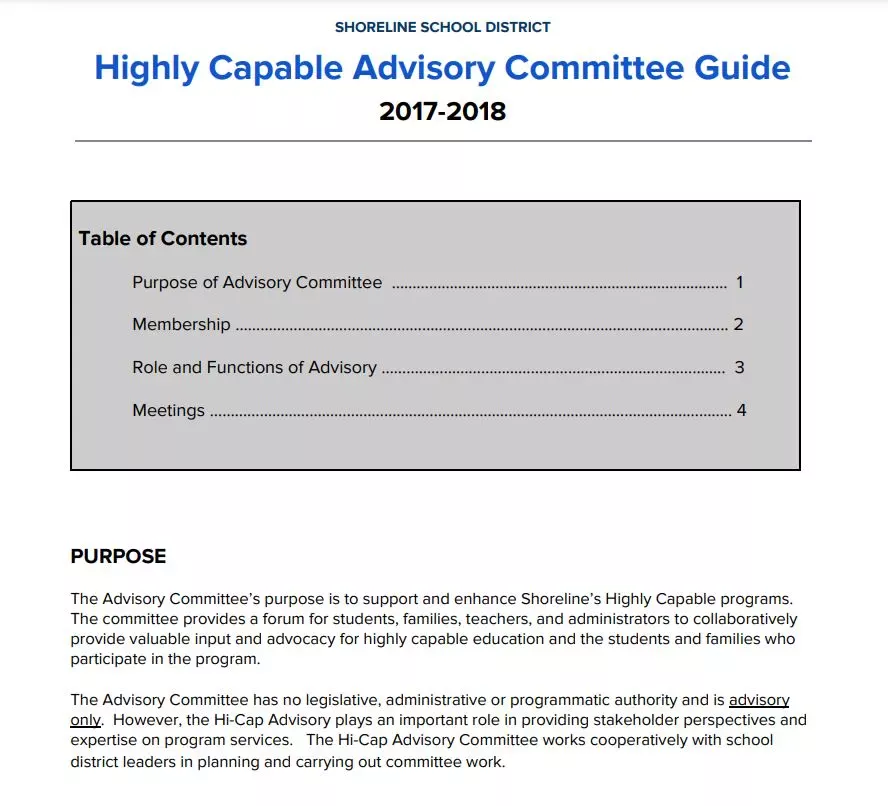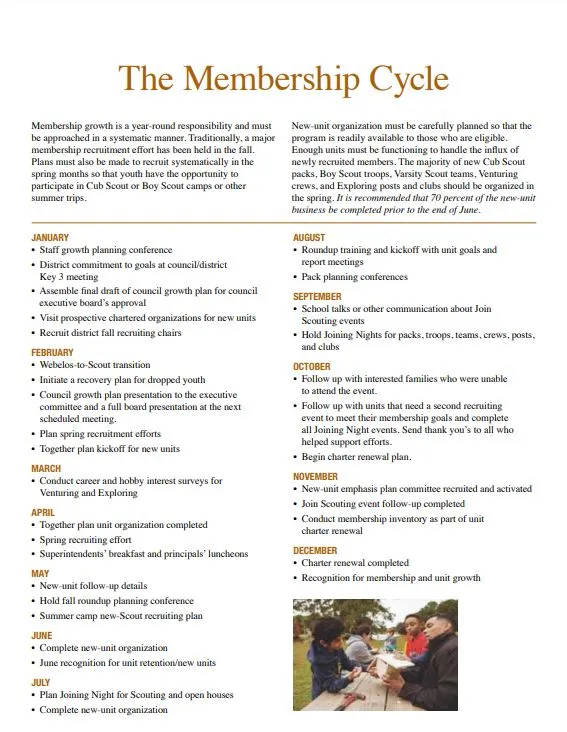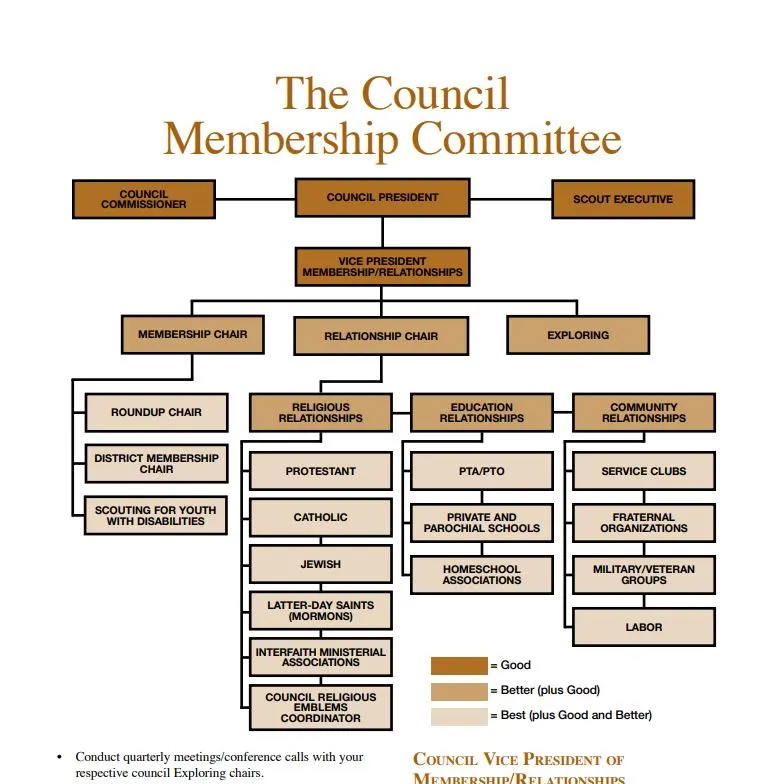
Membership committees help members develop connections that ensure organizations run smoothly. A good membership committee means a solid membership base, leading to increased engagement by the members and more revenue for the organization.
To ensure the success of your association, this article will outline seven main components of an effective membership committee guide. As we move forward, we will also explore the roles and responsibilities of each member of your committee.
Key Takeaways
- A well-crafted membership committee guide should include essential components such as the membership cycle, roles and responsibilities, communication guidelines, and available resources.
- Clearly defining each committee member's role, including the chairperson and staff liaisons, is crucial for effective functioning. This clarity helps avoid conflicts, improves productivity, and ensures everyone understands their contributions to the committee's goals.
- Establish clear, SMART (Specific, Measurable, Achievable, Relevant, Time-bound) goals and objectives that align with the organization's mission. This provides direction and allows for measurable progress in both short-term and long-term initiatives.
- Set transparent communication guidelines that specify methods, frequency, and content of information sharing. This promotes collaboration, keeps everyone informed, and maintains alignment across the committee.
- Implement feedback mechanisms to gather insights from members and stakeholders. Regularly review and update the guide based on this feedback and changing organizational needs to ensure its ongoing relevance and effectiveness.
What Is a Membership Committee Guide?
A membership committee guide is a document that outlines the responsibilities of each membership committee member and how the committee as a whole work to achieve its goals. This document aims to help the membership committee make decisions quickly, accurately, and effectively so they can spend more time on what matters: getting new members to grow their communities. Your guide should include information on the following:
- Members' responsibilities. Their role in the committee and how they fit into the organization's larger vision.
- Crucial processes like recruiting new members, outlining responsibilities, and establishing the dates they should be completed.
- Meeting details - How often should they meet and where?
The Shoreline’s Highly Capable Advisory Committee Guide below is a great example of a membership committee guide. The guide highlights the committee’s purpose, membership guidelines, roles and functions, and the meeting's details.
Read more: How to Take Board Meeting Minutes? A Step by Step Guide [with Best Practices and a Free Template]

As shown in Shoreline’s guide above, your committee guide should also include terms of service. These should explain what memberships are available, when those memberships expire, how memberships may be renewed or extended, and what the requirements are to become a member.
What’s the takeaway? The membership committee guide explains the committee's purpose and how it operates. The guide should be kept up-to-date and reviewed regularly. Also, check the grammar in the document to ensure it's clear and easy to understand.
Establishing Clear Goals and Objectives
A crucial component of any effective membership committee guide is a well-defined set of goals and objectives. These should align with the organization's overall mission and provide a clear direction for the committee's efforts. When establishing goals, consider both short-term and long-term targets that are specific, measurable, achievable, relevant, and time-bound (SMART).
For example, short-term goals might include increasing membership by 10% within six months or improving member retention rates by 5% over the next quarter. Long-term objectives could focus on diversifying the membership base, enhancing the value proposition of membership, or expanding into new geographical areas.
By clearly outlining these goals in your guide, you ensure that all committee members are working towards common objectives and can measure their progress effectively.
7 Points to Include in Your Membership Committee Guide
We've included a list of 7 points to include in your membership committee guide. This will help ensure that the membership committee works effectively and that members benefit from it.
1. Detail Your Membership Cycle

Your membership committee guide should include a detailed explanation of the entire membership cycle. A membership cycle includes recruitment information and methods, the application process, and steps to enrolling new members.
You'll also want to include a timeline that shows when your committee typically makes decisions about each step of the process. For example, when they decide whether or not to extend an offer.
What's more, you should feature information on recurring committee activities in your membership cycle because they are the backbone of your membership committee and help your organization develop efficiently.
For Instance, your membership committee guide is a great place to have a playbook for planning and managing annual events like the organization picnics and holiday parties.
The Boy Scouts of America’s membership cycle is a good example of this.
The details of your membership cycle will help your committee stay organized and ensure that nothing falls through the cracks during the recruitment process. It also helps guarantee that the membership base grows.
2. Getting Involved
Membership committees are a great way to get involved with your association and the community you serve. They're often made up of people who are passionate about the organization they serve and want to help the community succeed.
Non-members and ordinary community members can join a membership committee by volunteering to serve on it. This example below shows volunteers can join a management committee and uphold the organization's values.
But, as a committee member, How can you ensure you're doing everything you can to support the work of your committee? Here are vital points to help you get involved:
- Go to all the meetings, including paperless board meetings.
- Read up on the latest news and general information about your committee and the industry.
- Keep track of important dates and deadlines, especially if they're related to elections or other events within your organization's structure.
- Keep an eye out for any modifications or adjustments to procedures or processes that may affect how things run in your group—and don't be afraid to speak up and share your feedback if anything doesn't seem right.
You can use a free Grammarly alternative like Hemingway when writing regular feedback or reports on policy decisions and use visual aids such as PowerPoint presentations. It will help you get your point across quickly and clearly and keep the audience engaged.
Say you're on a committee trying to raise money for an event. You need to get the word out and convince people to donate, but you don't have much money to spend on advertising.
This is where your committee members can get involved.
You might ask them to list friends, family members, and acquaintances who they believe would be willing to donate. You may also ask them to personally contact their connections (through email or social media) and ask whether they'd be willing to give.
You can use various tools to verify email IDs and ensure your personalized outreach emails are delivered to your target audience. This personal touch helps create relationships with potential contributors and makes them feel like they're a part of something significant.
Including information about members' responsibilities and involvement in the membership, committee guide is critical. In doing so, your members will feel confident they're getting involved in the right way. They’ll also know their involvement and roles are recognized.
3. Clarify Your Committee’s Member Role
A critical step to creating a successful membership committee is clearly defining its members' roles. According to the club membership committee manual, the membership committee might be broken into subcommittees depending on the size and aims of your group.
For example, within the Boy Scouts of America membership committee guide, there are subcommittees under the district membership committee.
However, a good rule of thumb is ensuring individual committee members can fulfill their responsibilities without needing guidance from others (except when they're getting started).
If this is not the case, you may need to reevaluate your committee's structure or make some changes to how it operates. Clarifying your committee's member role is vital for several reasons.
- It aids in ensuring that everyone on the committee knows their function in the organization and how it fits into the broader structure. It thus increases people's confidence in their responsibilities and makes them more inclined to contribute entirely to the process.
- It assists you in avoiding disagreements among members and ensures everyone has a say in decision-making processes which can aid in avoiding situations where one person feels excluded or marginalized, leading to resentment or sabotage.
- It allows you to delegate tasks appropriately based on each person's skills and experience level so they can be as productive as possible while contributing their unique perspectives.
By including each member's role in the membership committee guide, you provide a uniform reference point that ensures everyone understands their roles within the committee.
As a result, it becomes easy for committee members to know what they should expect from each other. Hence, there aren't any gaps or misunderstandings about roles and expectations in the future, ensuring the successful running of the committee.
4.Set a Transparent Communication Guideline

Effective member communication is one of the most critical elements of a successful committee, as collaboration amongst committee members depends on it.
A communication guideline is a set of rules and procedures that govern how the information will be shared within a membership committee. To help set this guideline, consider the following:
- What methods of communication will be used? Email? Text message? Slack? Phone call? When will they be used (e.g., weekly or biweekly)?
- How much information should be shared at once? For example, will the committee members receive only one email weekly and wait until next week for more information? Or will they receive daily updates from their point person(s)?
By setting a communication guideline, your committee will stay on track with your project and ensure you accomplish everything per the schedule.
5. Decide Who Chairs the Committee
The chairperson informs the committee on decisions made by the Board of Directors or other Association committees and implements policies set forth by those bodies.
When selecting a committee chair, consider the following:
- The person should be someone who can keep things on track.
- The person should be able to make decisions and persuade others to follow them.
- The person should have an excellent working relationship with everyone in the group to communicate effectively.
Committee chairs with experience in membership committees are always best. They should understand how to manage their time and develop meeting agendas. They should also have good organizational skills—because this position requires organization.
6. Have Staff Support Who Act as Liaisons

The staff liaison is a person who connects one group with another, helping them to communicate and work together. A liaison is responsible for relaying information to another committee or department, ensuring everyone is on the same page and that interdepartmental operations run smoothly.
Liaisons must understand what motivates different people and how they think and behave to be effective in this role. They must also have strong communication skills to aid committee members in identifying solutions to difficulties or impediments.
Staff liaison officers are especially useful in organizations where several diverse groups work toward similar goals but do not always interact directly. In such cases, they facilitate effective, productive, and efficient communication across committees and departments within an organization.
When writing your membership committee guide, include information about staff support. It'll help your committee run better. You might even want to make a dedicated section for this.
A good place to start is by including information about who the liaisons are on your committee. Then, what their responsibilities are.
You should make sure that everyone knows who these people are. Also, they should know what they do and when to contact them in the event of an issue. This information is helpful to the committee members. They'll know who to go to with questions or concerns.
7. Keep Members Informed About the Resources
Keeping members posted about resources via the membership committee guide allows them to make informed decisions about their membership experience.
How? If committee members are aware of the resources, they will use them to guide them on how to get the most out of their service to the committee. Fortunately, there are several resources available that are just waiting for your members to use.
It's up to you to ensure they know where to look. The resources you point out to your committee members through the guide can include:
- A private community for your members.
- A library of helpful documents and other resources. This may include templates, discussion minutes, and sample meeting agenda, among others.
- Tools such as the email verification software solutions mentioned earlier support the committee members’ email outreach efforts.
- A directory of local events, including meetings and other opportunities for committee members to network.
- A list of professionals in your city who may be able to help committee members with their needs.
- The ability to contact fellow members directly via email or phone.
Sharing the resources arms your committee members with everything they need to do their jobs and improve the experience of other association members. That means it directly affects the ability of your association to achieve its goals.
Implementing Feedback Mechanisms
An often overlooked but vital component of a membership committee guide is the inclusion of feedback mechanisms. These systems allow the committee to gather insights from current and potential members, helping refine strategies and improve overall effectiveness.
Your guide should outline various methods for collecting feedback, such as annual surveys, post-event questionnaires, or regular check-ins with members. Establishing a process for analyzing and acting upon this feedback is also important.
Consider including guidelines for creating action plans based on member input and designating responsible parties for implementing changes. By incorporating a robust feedback system into your committee's operations, you ensure that your organization remains responsive to member needs and continues to evolve in alignment with their expectations.
In Closing
As you can see, there are several factors to consider while developing a membership committee guide, from detailing your membership cycle to keeping members informed about resources.
We've covered the fundamentals and more, so you'll have no problem getting started. Remember that your objective is to ensure everyone on your committee understands what they need to do to be productive and effective.
Also, keep in mind that a membership committee guide is not a set-and-forget thing. This is a living guideline that should be updated regularly. As your association’s procedures and processes evolve, so too should your membership committee guide. Therefore, evaluate the guide regularly to ensure it stays up to date and relevant.
Author’s Bio: Owen Baker is a content marketer for Voila Norbert, an online email verification tool. He has spent most of the last decade working online for a range of marketing companies. When he’s not busy writing, you can find him in the kitchen mastering new dishes.







